Abstract
Gene arrangement frequencies were determined at two stages in the life history of Drosophila pseudoobscura taken from nature. Three populations in the central highlands of Mexico were each sampled twice during 1976. Gene arrangement frequencies were measured in adult males and in larvae that were the offspring of females collected at the same time. The adult males were in all likelihood a representative sample of those who fathered the larvae produced by the wild females. Differences in gene arrangement frequency between these two life stages should indicate the operation of natural selection. One-third of our comparisons of common gene arrangement frequencies in males and in larvae from the next generation were statistically significant, as were one-third of our comparisons of total frequency arrays in the two life stages. We consider the components of selection that could produce such frequency changes and reason that male mating success must be the major one. Gene arrangement frequencies in the Mexican populations fluctuate within wide bounds. Selection must act to retain the polymorphism in the face of this flux in gene arrangement frequencies, and we suggest that male mating success plays an important role.
Full text
PDF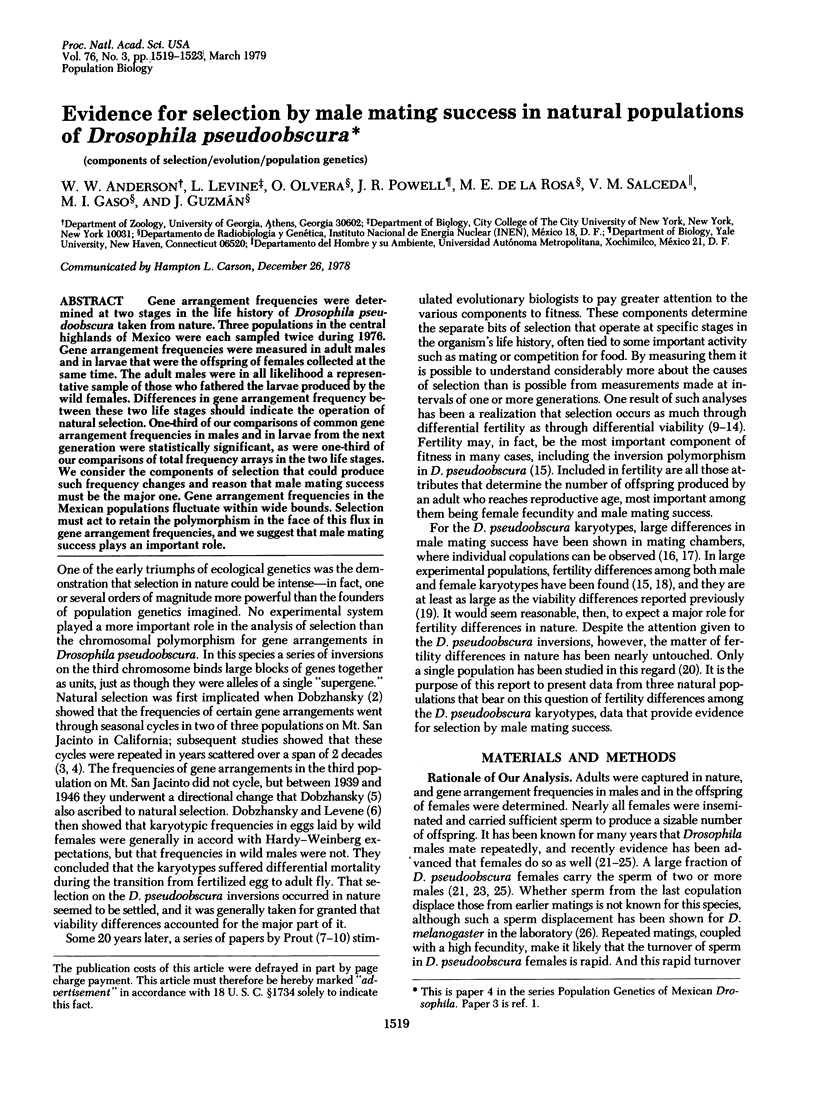
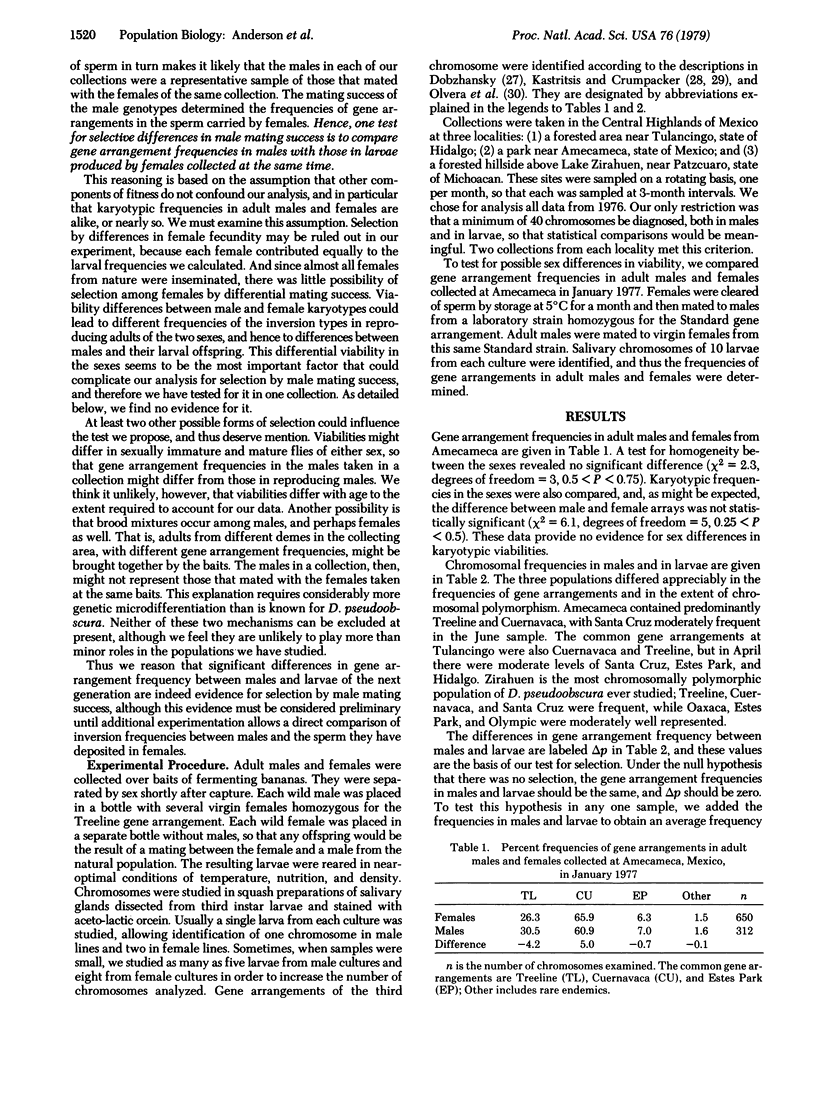
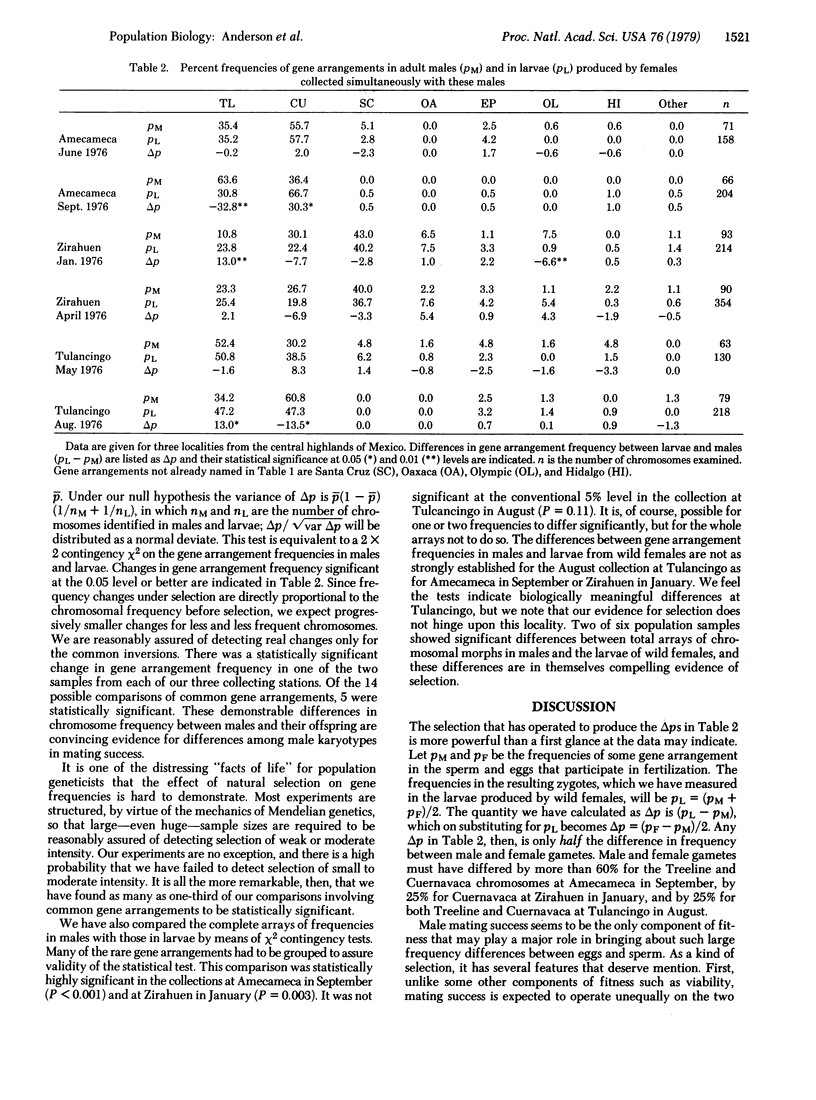
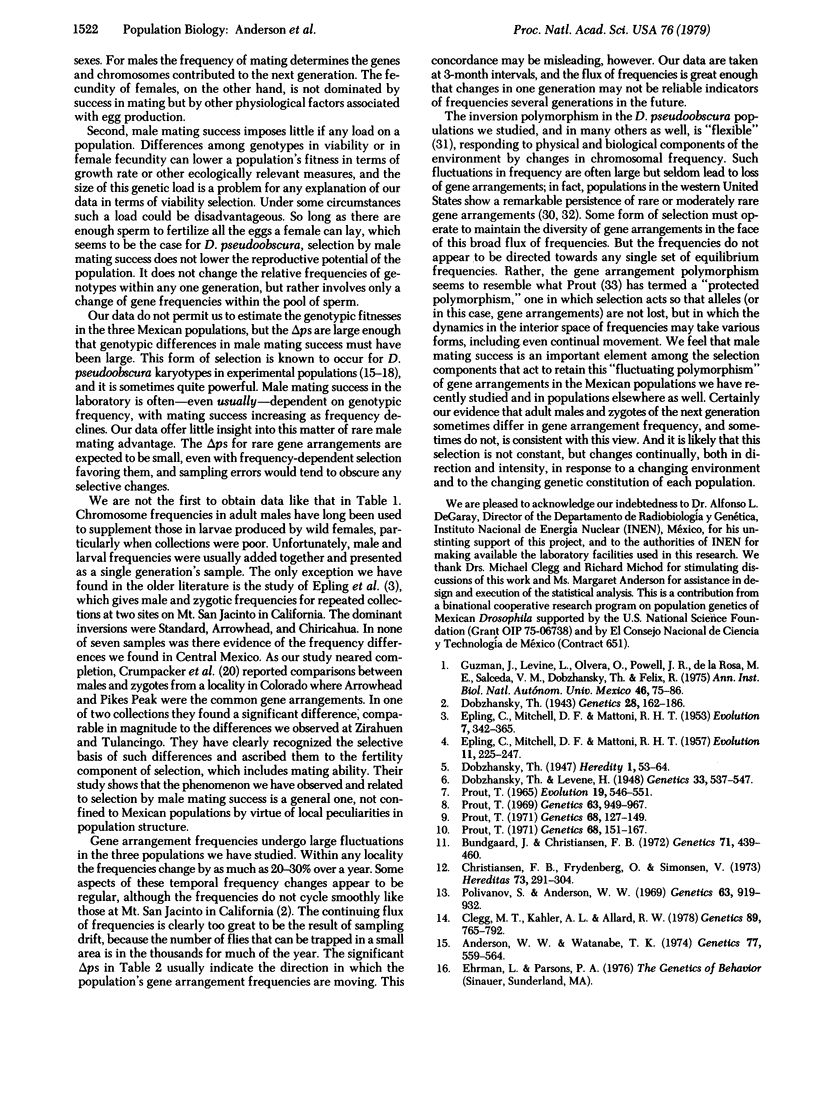
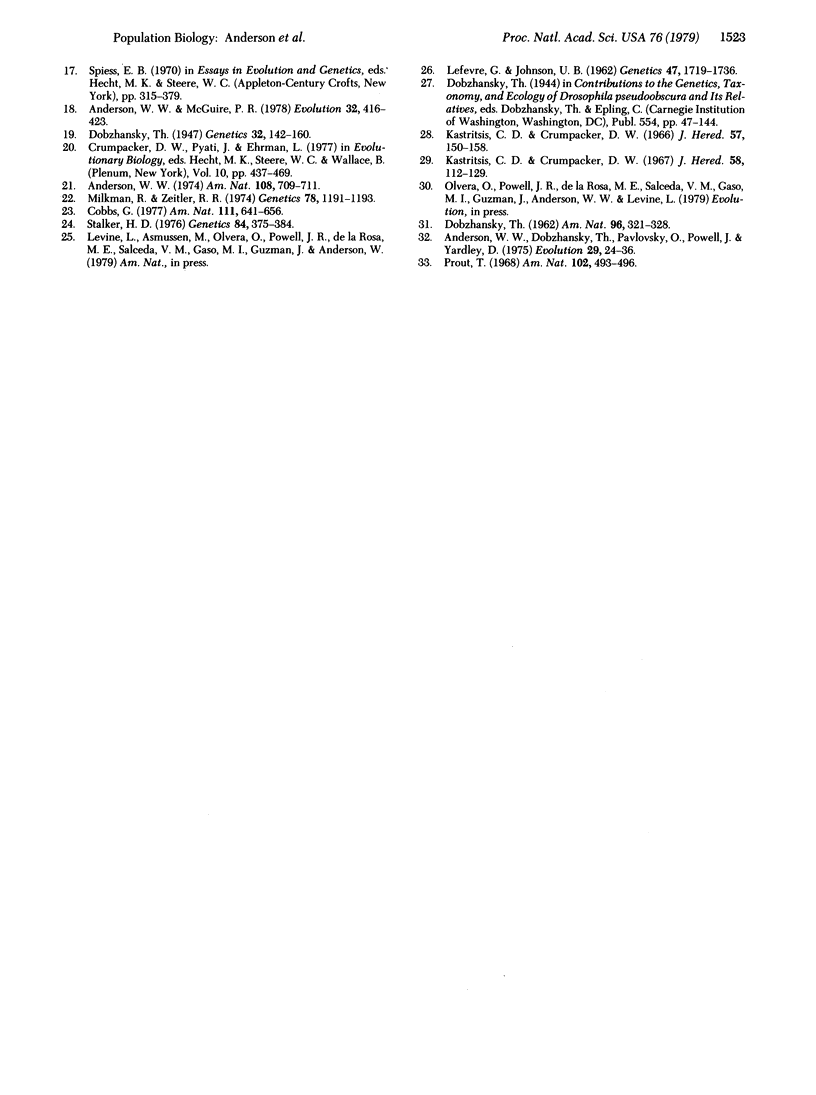
Selected References
These references are in PubMed. This may not be the complete list of references from this article.
- Anderson W. W., Watanabe T. K. Selection by fertility in Drosophila pseudoobscura. Genetics. 1974 Jul;77(3):559–564. doi: 10.1093/genetics/77.3.559. [DOI] [PMC free article] [PubMed] [Google Scholar]
- Bundgaard J., Christiansen F. B. Dynamics of polymorphisms. I. Selection components in an experimental population of Drosophila melanogaster. Genetics. 1972 Jul;71(3):439–460. doi: 10.1093/genetics/71.3.439. [DOI] [PubMed] [Google Scholar]
- Christiansen F. B., Frydenberg O., Simonsen V. Genetics of Zoarces populations. IV. Selection component analysis of an esterase polymorphism using population samples including mother-offspring combinations. Hereditas. 1973;73(2):291–304. doi: 10.1111/j.1601-5223.1973.tb01092.x. [DOI] [PubMed] [Google Scholar]
- Clegg M. T., Kahler A. L., Allard R. W. Estimation of life cycle components of selection in an experimental plant population. Genetics. 1978 Aug;89(4):765–792. doi: 10.1093/genetics/89.4.765. [DOI] [PMC free article] [PubMed] [Google Scholar]
- Dobzhansky T. Genetics of Natural Populations IX. Temporal Changes in the Composition of Populations of Drosophila Pseudoobscura. Genetics. 1943 Mar;28(2):162–186. doi: 10.1093/genetics/28.2.162. [DOI] [PMC free article] [PubMed] [Google Scholar]
- Kastritsis C. D., Crumpacker D. W. Gene arrangements in the third chromosome of Drosophila pseudoobscura. I. Configurations with tester chromosomes. J Hered. 1966 Sep-Oct;57(5):151–158. doi: 10.1093/oxfordjournals.jhered.a107495. [DOI] [PubMed] [Google Scholar]
- Kastritsis C. D., Crumpacker D. W. Gene arrangements in the third chromosome of Drosophila pseudoobscura. II. All possible configurations. J Hered. 1967 May-Jun;58(3):113–129. doi: 10.1093/oxfordjournals.jhered.a107561. [DOI] [PubMed] [Google Scholar]
- LEFEVRE G., Jr, JONSSON U. B. Sperm transfer, storage, displacement, and utilization in Drosophila melanogaster. Genetics. 1962 Dec;47:1719–1736. doi: 10.1093/genetics/47.12.1719. [DOI] [PMC free article] [PubMed] [Google Scholar]
- Milkmann R., Zeitler R. R. Concurrent multiple paternity in natural and laboratory populations of Drosophila melanogaster. Genetics. 1974 Dec;78(4):1191–1193. doi: 10.1093/genetics/78.4.1191. [DOI] [PMC free article] [PubMed] [Google Scholar]
- Polivanov S., Anderson W. W. Selection in experimental populations. II. Components of selection and their fluctuations in two populations of Drosophila melanogaster. Genetics. 1969 Dec;63(4):919–932. doi: 10.1093/genetics/63.4.919. [DOI] [PMC free article] [PubMed] [Google Scholar]
- Prout T. The Relation between Fitness Components and Population Prediction in Drosophila. I: The Estimation of Fitness Components. Genetics. 1971 May;68(1):127–149. doi: 10.1093/genetics/68.1.127. [DOI] [PMC free article] [PubMed] [Google Scholar]
- Prout T. The Relation between Fitness Components and Population Prediction in Drosophila. II: Population Prediction. Genetics. 1971 May;68(1):151–167. doi: 10.1093/genetics/68.1.151. [DOI] [PMC free article] [PubMed] [Google Scholar]
- Prout T. The estimation of fitnesses from population data. Genetics. 1969 Dec;63(4):949–967. doi: 10.1093/genetics/63.4.949. [DOI] [PMC free article] [PubMed] [Google Scholar]
- Stalker H. D. Enzymes and reproduction in natural populations of Drosophila euronotus. Genetics. 1976 Oct;84(2):375–384. doi: 10.1093/genetics/84.2.375. [DOI] [PMC free article] [PubMed] [Google Scholar]


